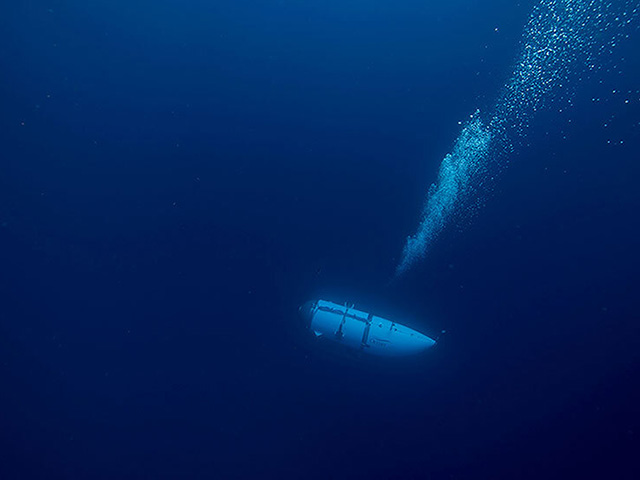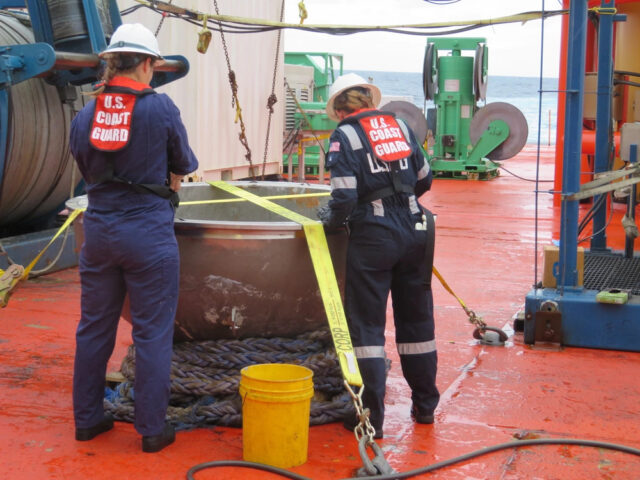Further “presumed human remains” along with what is likely the last of the debris from the faulty OceanGate Titan submersible have been recovered from the ocean floor, the U.S. Coast Guard (USCG) said Tuesday.
Marine safety engineers with the USCG’s Marine Board of Investigation (MBI) “recovered and transferred remaining Titan submersible debris and evidence from the North Atlantic Ocean seafloor, Oct. 4,” officials stated.
“Additional presumed human remains were carefully recovered from within Titan’s debris and transported for analysis by U.S. medical professionals,” the USCG reported, noting that they were joined by investigators from the U.S. National Transportation Safety Board (NTSB) and the Transportation Safety Board of Canada in their expedition.
The debris was recovered approximately 1,600 feet from the wreckage of the Titanic ship, and included the “intact titanium endcap,” from the 22-foot Titan submersible, according to the New York Post.
The submersible, which imploded shortly after embarking on an expensive mission to view the sunken Titanic in June, was manned by 61-year-old Stockton Rush, CEO of the diving company OceanGate. He was killed instantly, as were the four passengers on board: French submariner Paul-Henri Nargeolet, 77; British billionaire and explorer Hamish Harding, 58; Pakistani businessman Shahzada Dawood, 48; and his 19-year-old son, Suleman Dawood.

An undated photo shows a tourist submersible belonging to OceanGate descending at sea. (Ocean Gate/Handout/Anadolu Agency via Getty Images)
As reported by the Associated Press, OceanGate charged the Dawoods and Harding up to $250,000 each per ticket to go on the risky tour.
The first pieces of the wreckage and human remains were found on June 28, ten days after the implosion.
Rush had previously come under fire for repeatedly ignoring warnings about potential safety hazards with the Titan project. In a 2018 letter to the OceanGate CEO from the Marine Technology Society, a respected trade group that aims to promote ocean technology, more than 30 experts warned of potentially “catastrophic” consequences due to the company’s “experimental approach.”
“This letter is sent on behalf of our industry members who have collectively expressed unanimous concern regarding the development of TITAN and the planned Titanic Expedition,” the organization wrote. “Our apprehension is that the current experimental approach adopted by OceanGate could result in negative outcomes (from minor to catastrophic) that would have serious consequences for everyone in the industry.”
OceanGate has since gone out of business.
United States investigators determined that the vessel imploded just one hour and 45 minutes into the trip, killing everyone on board instantly when the carbon fiber hull was unable to hold against the ocean’s pressure at around 12,000 feet underwater.
Before the implosion was found to be the cause of the loss of communication to Titan, a frantic search effort took place to save the passengers onboard as the oxygen was presumably running out.

COMMENTS
Please let us know if you're having issues with commenting.